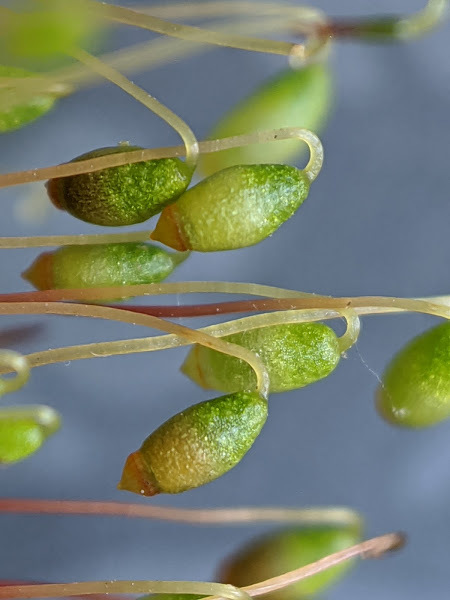Bryum argenteum
Hedw.Dioicous. Asexual reproduction by gemmae in leaf axils of sterile stems. Turfs or cushions on soil and in rock or pavement crevices, silver-green or silvery. Stems branching by innovations, julaceous, 5–15 mm long, pale green, orange or pink, sparsely covered with pale brown rhizoids toward base. Leaves closely imbricate when moist or dry, ovate to ovate-lanceolate, 0.5–1.5 mm long, c. 0.4 mm wide, concave; apex acute or obtuse; costa weak, percurrent or ending in apical half of leaf; margin entire or rarely denticulate at apex, plane, without a border; laminal cells in apical half rhomboidal-hexagonal, 40–70 μm long, 12–15 μm wide, hyaline in apical 1/4–1/2; basal laminal cells short-rectangular or quadrate. Seta 12–20 mm long, red. Capsules pendent, ovate, 0.85–2 mm long. Operculum convex, apiculate.
LoM, MuM, Wim, VVP, VRiv, RobP, MuF, GipP, OtP, WaP, Gold, CVU, GGr, DunT, NIS, EGL, EGU, WPro, HSF, HNF, OtR, Strz, HFE, VAlp. Widespread throughout the state and common in cities and towns where it is common between pavement, on rooves and in gutters, on walls and on open soil in gardens, but also in disturbed sites such as roadsides and picnic grounds as well as more natural settings such as woodland, beside creeks, rocky gorges and outcrops and alpine herbfields and grasslands. All states and territories. Cosmopolitan.
 Spinning
Spinning


